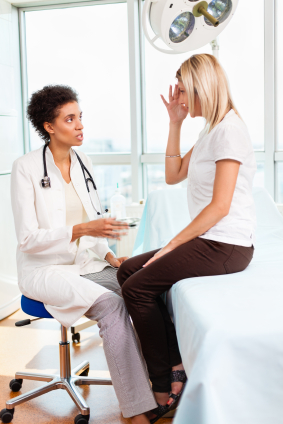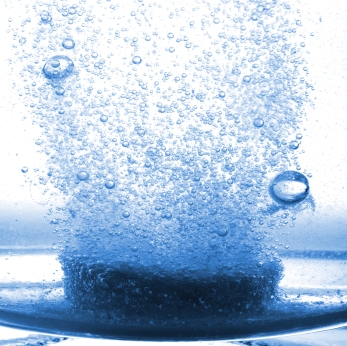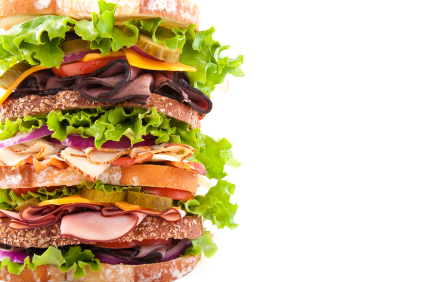Alternative medicine and the ‘pause: what your gynecologist is thinking
Women rank among the highest consumers of complementary and alternative medicine for their healthcare, and according to the National Center for Complementary and Alternative Medicine, age matters. In fact, the largest percentage of adults reporting that they use alternative medicine strategies are 50 to 59 years old, and as many as 42% discuss their use with their doctors. However, what does your gynecologist think about complementary and alternative medicine use? Is she or he supportive and what modalities tend to rank highest in terms of recommendations or endorsements? Moreover, how do gynecologists differ in their opinions?
In the U.S., most ob/gyns appear to believe that convention medicine practices for reproductive issues might benefit by the integration of complementary strategies. However, most of the positive beliefs focus on biofeedback, chiropractic, acupuncture or meditation. Conversely, the doctors report that they would not recommend dietary changes or Traditional Chinese Medicine and a majority were not strong supporters of herbal medicine. This is in direct conflict with German gynecologists. But why should we care about the Germans and what they think!!!?
To digress, I don’t know how many of you are familiar with the Commission E Monographs but, they comprise the world’s leading scientific summaries on the use of medicinal herbs in health and disease. In the late 1970s, the German Ministry of Health established Commission E, a panel of experts charged with evaluating the safety and efficacy of the herbs available in pharmacies for general use. In all, the group published 380 herbal monographs that are considered “the most accurate information available in the entire world on the safety and efficacy of herbs and phytomedicines.” Hence, the Germans definitely have a leg up when it comes to alternative medicine, at least when it comes to the use of herbal alternatives.
So, let’s take a look at a similar survey experience newly published in Complementary Therapies in Medicine, in which over 2,500 respondents indicated a familiarity with the use of alternative medicine specifically for menopausal symptoms. Almost all of the gynecologists had some experience with black cohosh, chaste tree berry and St. John’s Wort and believed them to be effective. And the modality that they felt was most effective? Lifestyle changes and alteration (think: change in dietary habits, physical activity, reduction of stress, etc). The least effective strategies, at least in the eyes of German doctors, were yoga, acupuncture and homeopathy.
The researchers point out that the viewpoint of German doctors is important because these practitioners play an important and consistent role counseling women who complain of menopausal symptoms. The same is true for their U.S. counterparts. And yet, despite the wealth of data in the Commission E monographs, many doctors still continue to question effectiveness and scientific evidence supporting the use of alternatives.
Will this make a difference with regard to the choices that women are making? Probably not, because as I’ve been writing for years, one size does not fit all, especially when it comes to weighing the benefits versus the risks of hormone replacement.
The next time you have your annual with your gynecologist, find out what she or he thinks of complementary and alternative and strategies and most of all, ask why. What she or he is thinking might not be aligned with what you find works best for you.
Read More
Friday Folly: Does your romantic life need a spicy boost?!
Ever since I first subscribed to Birchbox, I’ve been intrigued by monthly subscription services. I’ve given gifts of Bespoke to the favourite men in my life and ConciousBox to my health and eco savvy friends. Everyone who has received the monthly surprises in these boxes has been delighted. So, I am delighted to see that subscriptions have also moved into the boudoir.
I stumbled across SpicySubscriptions yesterday afternoon when I was taking a break from an otherwise hectic day. And, I love the idea of a gift of love to one who deserves it most: you.
I’ve not tried the Spice Box, but the idea is simple: monthly deliveries of lubricants, condoms, massage oils, candles, fragrances, sexual educational books, games, costumes, toys and lingerie to take the spice out of the kitchen and into the bedroom.
Sex during menopause can be challenging; women often have to deal with issues of vaginal dryness, a lack of desire or fatigue, all elements that can lead to sexual dysfunction. Not all of these problems can be conquered by a few toys or lubricant, but boy, oh, boy, shaking up the trees a bit sure can change one’s perspective and perhaps restore some of that lost luster.
I’ve not personally tried SpicySubscriptions so I cannot vouch for the quality of the products nor the company itself. However, I would gladly sign up for the ‘toy of the month’ or ‘spice box’ subscription just as I have signed up for BirchBox.
What do you think? Is Spice Box worth a Friday Fling?
Read MoreWednesday Bubble: When it comes to bone health, D is for “don’t bother”
Conventional wisdom suggests that combining calcium with vitamin D improves calcium absorption, and therefore may help prevent fractures resulting from bone loss and the body’s inability to replace bone. Notably, in younger people, the body works efficiently to replace bone after it breaks it down. However, after the age of 30, women begin lose bone mass and as I’ve written time and again in Flashfree, by the time we hit menopause, this process speeds ups, resulting in osteopenia and of course, osteoporosis.
And yet, researchers are now saying that they’ve confirmed that while calcium supplementation (1,200 mg daily) may reduce bone turnover and by default, improve overall bone health, adding vitamin D offers no additional advantage unless a woman has an existing vitamin D deficiency. In this recent study of 159 menopausal women, they compared vitamin D and calcium to calcium alone to vitamin D alone to placebo. They then measured a marker of bone turnover in the blood — PTH, or parathyroid hormone — over a period of six months.
Not surprisingly, they found that when they compared the women taking daily calcium to those who obtained calcium naturally in their diet, calcium was a clear winner, resulting in a significant reduction in bone turnover. However, when vitamin D was added to daily calcium, it did not seem to add any benefit (although it also did no harm).
No harm, no foul?
Not quite. The researchers say that too much calcium is too much of a good thing and that calcium balance is critical. The addition of vitamin D may lead to a condition called hypercalciuria — excessive calcium in the blood — which over time, can impair kidneys. The best practice is a cautious one; consult your practitioner to learn what your calcium levels are and proceed from there. If s/he recommends supplementing natural dietary intake of calcium with supplements, then you are good to go. However, when it comes to D and bone health? Maybe don’t!
In the interim, if you are interested in learning more about calcium do’s and don’ts, the archives hold a wealth of information. Check these posts out!
Read MoreGuyside. As advertised on TV: selling men short
It’s perhaps the easiest thing in the world to criticize TV advertising. Everybody sees an ad and find it puerile, stupid, offensive, or something. And there’s no doubt that women have been very poorly treated by all sorts of ads in the past and now, too. Objectified, used purely for their sexuality, portrayed as stupid — there’s a legendary description of advertising as “Two Cs in a K.” The K stands for kitchen; I’ll let you figure out what the C stands for.
But it ain’t so great for men either, out there. My personal favorite ads? Just for Men. Oh, Just For Men, how you sell men short. I’m divided over which of their campaigns is more patronizing and offensive: the one with two adorable daughters telling their dad “it’s time”:
The inexplicable “Beard Baby” ad:
Or the one with three retired athletes humiliating themselves in front of bimbos:
It’s not just hair commercials for older dudes. It’s razor commercials, and even commercials aimed at younger guys (AXE, anyone?). I wouldn’t even call it subliminal — it’s quite clear that for advertising aimed at men, the message is: “Use our product, get laid.” That makes very good sense… if you’re advertising an erectile dysfunction drug.
What bugs me about the advertising aimed at me is that the only reason for exercise, for grooming, or other products or services aimed at men, is heterosexual sex. Don’t get me wrong — I’m in pro-heterosexual sex. I just think (a) there’s more to the world than just a man and a woman having sex; and (b) there are more motivating factors in the world than that.
As a man, my frustration with ads targetting me makes me think about the ads targetting other demographic segments. I don’t doubt that other groups are as poorly served by TV ads aimed at them as men are by ads for “men’s products.” And so it’s no wonder that there’s so much kibitzing, good-natured and otherwise, about the poor job these ads do to communicate their messages.
Think of the difference between this razor commercial:
And this one:
To me, the difference is one of tone. One is cynical, relying on the brain-penis connection. The other is smart and self-referential, acknowledging that this really is just body wash, after all.
The success of the Old Spice ad campaign was phenomenal. But we need to continue to teach advertisers that men are more than leering adolescents, and that when you make ads like these, you sell men — and women — short.
Read MoreWednesday Bubble: Stories from the Sandwich Generation
I have long heard the term ‘Sandwich Generation’ tossed around as if it’s something that those of us who are in our fifties can’t escape. Indeed, women and men between the ages of 45 and 55, the generation I have always referred to as the Tailgaters (not quite Boomers but at the tail end) are increasingly finding themselves in a financial pickle as they try to navigate college tuition, aging parents who may need financial assistance and their own retirement. However, when I step back from the classic definition and remove the top layer, what I really see is an aspect of being part of the Sandwich that many people disregard: emotions.
In an interesting piece that ran in yesterday’s New York Times, journalist Jane Brody writes “moral obligations to assist one’s aging parents are commonly felt. They can leave adult children feeling overburdened and neglectful of their own families, personal needs and goals. Indeed, The New York Times for several years has devoted a blog entirely to this subject, The New Old Age.”
There it is; not only are we being pulled in various financial directions but we are also wedged between the emotional needs of ourselves, our family and our parents’.
How do you navigate this path successfully, without succumbing to emotional exhaustion? And when is it okay to step back and take a day to regroup and reenergize in the midst of a crisis? When is the deck so stacked that one wrong move can cause the entire sandwich to spill over onto the plate of life?
Earlier this year, I reported on findings from a nine-year study in almost 200 midlife women (ages 49 to 53) that supported what we all inherently know; this emotional burden may skew towards women in many cases and recovery for some, especially those who experience high levels of burnout, may be slow. The most important factors that promote a slow recovery include concurrent changes in life stress, work-related factors and coping ability/attitudes towards life. When women were divided into clusters reflecting patterns of burnout, the researchers found that high levels of life stress (e.g. concern for ailing parents, or concern for own health or their partner), coupled with a greater sensitivity to stress and job strain was a recipe for prolonged, worsening burnout. Women who had high levels of life stress but more control over their work environment were able to recover from burnout over time. Conversely, women with low levels of life stress, susceptibility to stress, anxiety and high levels of coping and a sense of control didn’t appear to be dealing with much burnout; the ability to draw on internal resources appeared to be protective in across a broad range of wellbeing indices.
I am in the midst of my own sandwich right now, balancing aging parents requiring medical and emotional attention with work with finances with a search for a new home. I am a burnout poster child for countless others who find themselves feeling helpless as they try to decide whether mustard or mayo will somehow make it all a bit more palatable.
Analogies aside, I would love to hear your personal story, the pathways you’ve engaged to find joy in the midst of an unbalanced life, the strategies you’ve used to redefine your role in the Sandwich that is life and aging parents and family and health and finances.
Where are you? And where do you want to be.
I want to hear from you my fellow Sandwichers. Share your recipe for regaining your power and balance, your tricks of the trade, your trials and tribulations, your journey navigating your way to happy. Post a comment below or write to me at flashfree111@gmail.com. Who knows? We may have a series in the making.
Read More










